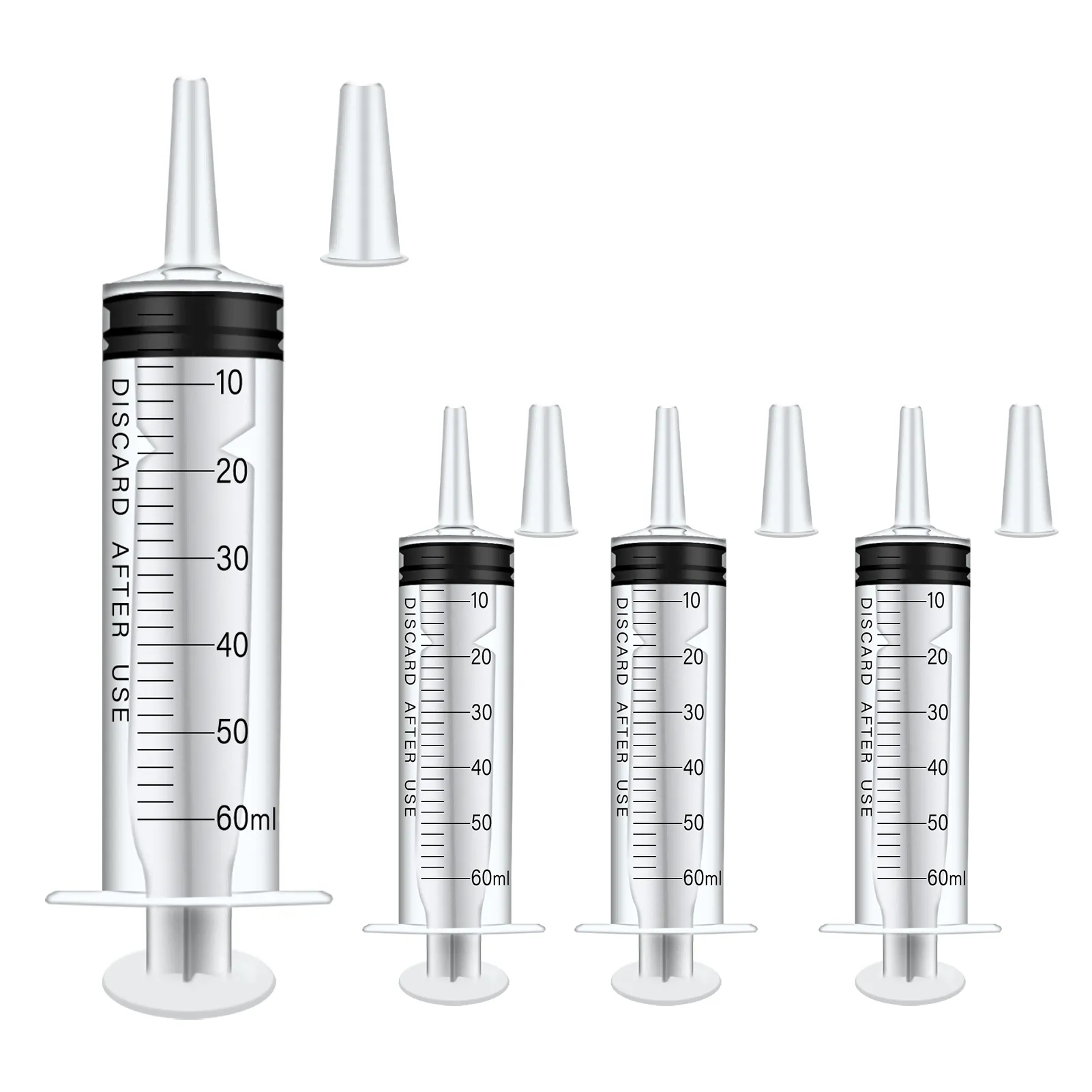Understanding Medical Feeding Tools for Enhanced Patient Care
The healthcare industry has evolved significantly in recent years, with feeding syringes emerging as essential tools in patient care and nutrition delivery. These specialized medical devices have revolutionized the way healthcare providers and caregivers administer nutrition, medication, and fluids to patients who cannot feed themselves conventionally. As we delve deeper into this topic, we'll explore the various aspects of feeding syringes, their applications, and best practices for safe usage.

Essential Components and Types of Feeding Syringes
Design Features and Materials
Feeding syringes are specifically engineered with patient safety and comfort in mind. These medical devices typically feature a smooth barrel, clearly marked measurements, and a specialized tip designed for accurate delivery of nutrition or medication. The materials used in their construction are medical-grade, latex-free plastics that ensure compatibility with various feeding solutions and medications. The transparent nature of feeding syringes allows healthcare providers to monitor the contents and identify any potential issues during administration.
Available Sizes and Specifications
Healthcare facilities stock feeding syringes in various sizes to accommodate different feeding requirements. Common sizes range from 1ml for precise medication delivery to 60ml for larger volume feedings. Each size serves specific purposes, with smaller feeding syringes offering more accurate measurements for medications and larger ones facilitating efficient nutrient delivery. The choice of size depends on factors such as the patient's age, condition, and prescribed feeding regimen.
Specialized Features for Different Applications
Modern feeding syringes come equipped with various specialized features to enhance their functionality. Some models include ENFit connections for enhanced safety, while others feature catheter tips or oral tips depending on the intended use. These design variations ensure that feeding syringes can be safely used across different medical scenarios, from neonatal care to adult feeding support.
Safe Handling and Usage Guidelines
Proper Cleaning and Maintenance
Maintaining the cleanliness of feeding syringes is crucial for patient safety. Healthcare providers must follow strict protocols for cleaning and sanitizing these devices between uses. This includes thorough rinsing with warm water immediately after use, followed by proper disinfection according to institutional guidelines. Regular inspection for wear and tear ensures that feeding syringes remain in optimal condition for safe use.
Storage and Replacement Protocols
Proper storage of feeding syringes extends their lifespan and maintains their safety features. They should be stored in a clean, dry environment away from direct sunlight and extreme temperatures. Healthcare facilities typically implement rotation systems to ensure that older syringes are used first and replaced according to manufacturer recommendations. Regular inventory checks help maintain an adequate supply while ensuring that no expired or damaged feeding syringes remain in circulation.
Administration Techniques and Best Practices
Correct Positioning and Administration
Proper positioning during feeding is essential for both patient safety and comfort. Healthcare providers should ensure that patients are positioned at an appropriate angle, typically 30-45 degrees, to prevent aspiration. The feeding syringe should be held at the correct angle, and the plunger should be pressed smoothly and steadily to deliver contents at a comfortable pace for the patient.
Monitoring and Documentation
Accurate monitoring and documentation of feeding sessions are crucial aspects of patient care. Healthcare providers must record important details such as the volume administered, time of feeding, and any observations during the process. This information helps in tracking patient progress and making necessary adjustments to feeding plans. Regular assessment of feeding tolerance and any complications ensures optimal outcomes.
Safety Considerations and Risk Management
Prevention of Common Complications
Understanding and preventing potential complications is vital when using feeding syringes. Healthcare providers must be vigilant for signs of aspiration, tube blockage, or feeding intolerance. Regular assessment of the patient's condition and proper positioning during feeding help minimize these risks. Additionally, ensuring proper syringe maintenance and following manufacturer guidelines contribute to safer feeding practices.
Emergency Response Protocols
Healthcare facilities must have clear protocols in place for addressing emergencies related to feeding syringe use. Staff should be trained in recognizing signs of complications and implementing appropriate interventions. Quick access to emergency equipment and clear communication channels ensure prompt response to any adverse events during feeding sessions.
Training and Education Requirements
Staff Competency Programs
Healthcare facilities must implement comprehensive training programs to ensure staff competency in using feeding syringes. These programs should cover proper handling techniques, safety protocols, and emergency procedures. Regular updates and refresher courses help maintain high standards of care and keep staff informed about new developments in feeding syringe technology and best practices.
Patient and Caregiver Education
When patients transition to home care, proper education of family members or caregivers becomes essential. Healthcare providers must ensure that caregivers understand proper feeding techniques, cleaning procedures, and safety precautions. Written instructions and hands-on demonstrations help reinforce proper usage and maintenance of feeding syringes in the home setting.
Frequently Asked Questions
How often should feeding syringes be replaced?
Feeding syringes should typically be replaced according to manufacturer guidelines and institutional protocols. Most healthcare facilities recommend replacing them every 24-48 hours for single-patient use, while disposable syringes should be discarded after one use. Regular inspection for wear and tear is essential, and immediate replacement is necessary if any damage is observed.
What are the signs of feeding syringe deterioration?
Key signs of feeding syringe deterioration include discoloration, cracks in the barrel or plunger, stiffness in movement, worn or unclear measurement markings, and any visible damage to the tip. Healthcare providers should regularly check for these signs during routine maintenance and replace syringes showing any signs of wear.
Can feeding syringes be sterilized for reuse?
While some feeding syringes are designed for multiple uses after proper cleaning and sterilization, others are strictly single-use devices. Healthcare providers must follow manufacturer guidelines and facility protocols regarding sterilization methods. It's crucial to verify whether a feeding syringe is approved for reprocessing before attempting sterilization.

